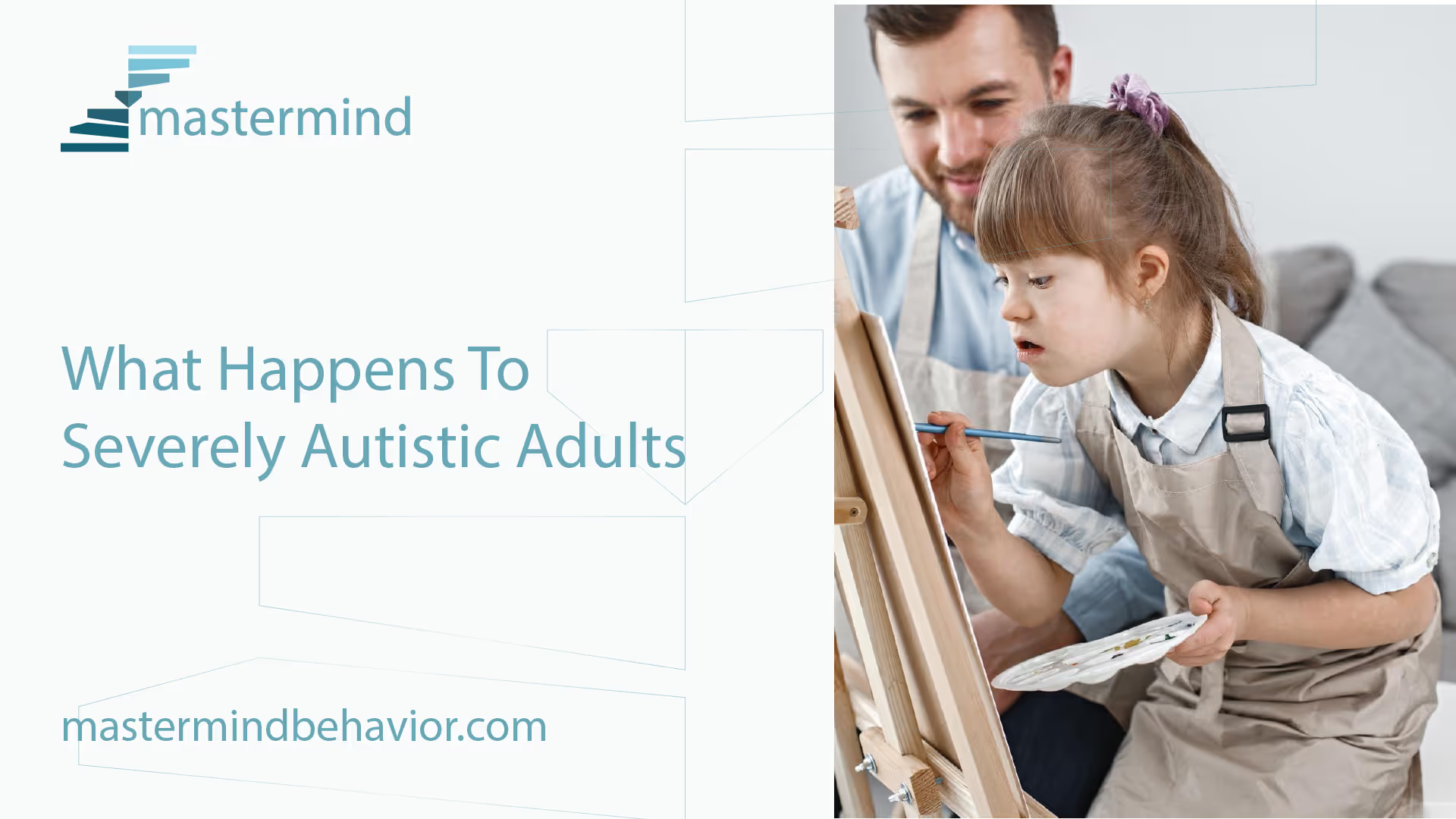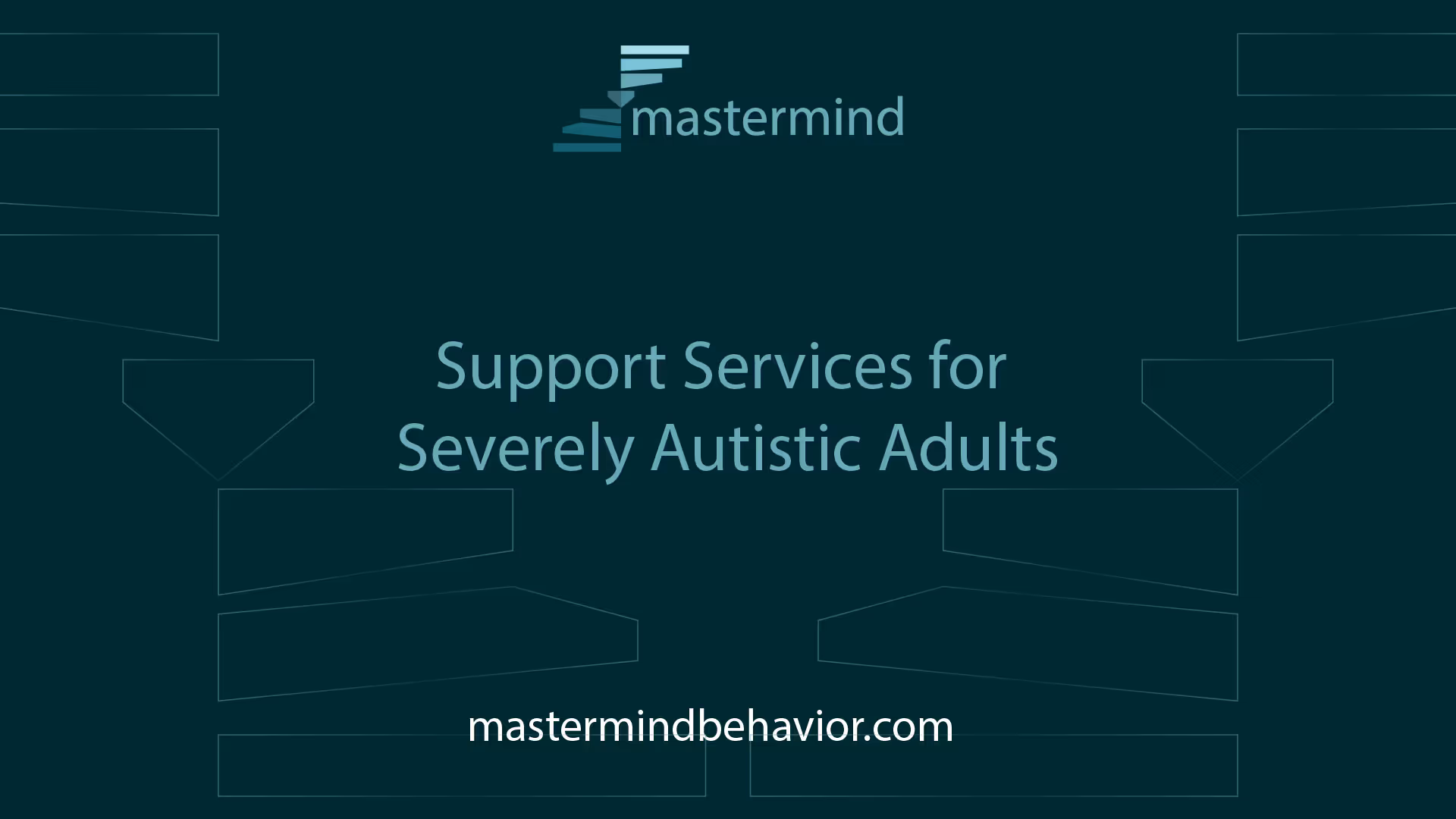What Happens To Severely Autistic Adults

Challenges Faced by Severely Autistic Adults

Severely autistic adults face a range of challenges that can impact their daily lives significantly. Understanding these challenges is crucial for providing the necessary support and services to help them thrive.
Communication Difficulties
Severely autistic adults often experience significant challenges in expressing themselves and understanding others. Verbal communication can be particularly difficult, with many relying on alternative forms of communication such as gestures, sign language, or augmented communication devices. These communication barriers can lead to frustration and social isolation. For more insights on communication in autism, visit our article do autistic people talk to themselves?.
Sensory Sensitivities
Many severely autistic adults have sensory sensitivities, such as hypersensitivity to sounds, lights, textures, smells, or tastes. These sensitivities can make everyday sensory experiences overwhelming or distressing [1]. Sensory sensitivities can vary widely among individuals, making it essential to tailor environments and experiences to their specific needs. For a deeper understanding of autism across different regions, check out autism in Europe.
Daily Living Skills
Daily living skills are another area where severely autistic adults often face challenges. These skills include personal hygiene, dressing, feeding, and managing household tasks. Difficulties in these areas can impact their ability to live independently or engage in daily activities without support. For more information on the genetic aspects of autism, you might find our article which parent carries the autism gene? interesting.
These challenges highlight the importance of tailored support services and interventions to help severely autistic adults navigate their daily lives. For more information on the broader spectrum of autism, visit is everyone on the autism spectrum?.
Support Services for Severely Autistic Adults

Supporting severely autistic adults requires a variety of services tailored to their unique needs. These services can enhance their quality of life and provide crucial assistance to their caregivers. Here, we explore three key support services: home support services, respite care, and in-home autism services.
Home Support Services
Home support services provide essential assistance to adults with autism, helping them live independently and achieve their goals. These services benefit not only the individuals with autism but also their caregivers by easing their responsibilities.
Home support services can include:
- Daily Living Activities: Assistance with cooking, cleaning, and personal hygiene.
- Family Training and Support: Education on autism, behavior management, communication strategies, and coping techniques.
- Community Integration: Helping individuals engage in social activities and community events.
Respite Care
Respite care is designed to provide temporary relief for caregivers who need a break from their responsibilities [2]. This type of care can help prevent caregiver stress and burnout, ensuring they can continue providing quality care.
- Short-Term Relief: Temporary care to give caregivers a break.
- Preventing Burnout: Reducing stress and fatigue for caregivers.
- Flexible Scheduling: Can be arranged for a few hours, days, or even weeks.
Despite its temporary nature, respite care is a valuable service that can greatly benefit both caregivers and individuals with autism. For more information on how to support autistic individuals, visit our article on do autistic people talk to themselves?.
In-Home Autism Services
In-home autism services offer personalized care and support to adults with autism in the comfort and privacy of their own homes [2]. These services are designed to meet the unique needs of individuals with autism and can include a variety of therapeutic and daily living skills training.
- Personalized Care: Tailored to the specific needs of the individual.
- Therapeutic Services: Including behavioral therapy, speech therapy, and occupational therapy.
- Daily Living Skills Training: Teaching skills such as cooking, cleaning, and personal hygiene.
For further insights into supporting autistic adults, explore our articles on autism in Europe and which parent carries the autism gene?.
These support services are crucial in providing the necessary assistance to severely autistic adults, ensuring they can lead fulfilling lives while easing the burden on their caregivers.
Nurturing Strengths of Severely Autistic Adults
Understanding and nurturing the strengths of severely autistic adults is crucial for empowering them and enabling meaningful contributions to society. By focusing on their abilities and providing appropriate support, individuals with severe autism can thrive.
Contribution to Society
Severely autistic adults have unique strengths and talents that can be harnessed in various ways to contribute to society. For instance, many individuals excel in roles that require attention to detail, pattern recognition, or repetitive tasks. These abilities can be valuable in various job settings, including data entry, quality control, and more.
Initiatives like the Autism at Work program by SAP, which aims to hire 1% of their employee population with autism, reflect corporate commitment to promoting neurodiversity in the workforce. This program underscores the potential of autistic adults to contribute effectively in professional environments.
In creative vocational settings, individuals with severe autism can also find fulfilling roles. For example, a young man with autism successfully handed out maps to visitors at a zoo, with the assistance of an aide. This highlights the importance of innovative approaches to create employment opportunities for severely autistic adults.
Recognizing Abilities
Recognizing and appreciating the abilities of severely autistic adults is essential for their empowerment. Many individuals with severe autism possess remarkable skills and talents that can be nurtured through appropriate support systems.
Organizations like Autism Speaks work diligently to identify solutions that address the diverse needs of adults with autism. They offer support in areas such as navigating adult services, rights awareness, and beginning the housing search. By recognizing these abilities, society can create more inclusive environments for autistic individuals.
Support services, including in-home autism services, play a significant role in nurturing these abilities. By providing personalized care and support, these services help individuals with severe autism develop essential life skills and achieve greater independence.
To further illustrate the importance of recognizing abilities, consider the following table showcasing different areas where severely autistic adults can excel:
By focusing on these strengths and providing the necessary support, society can empower severely autistic adults to lead fulfilling lives and make meaningful contributions. For more information on the health needs and challenges faced by autistic adults, refer to our section on health needs of autistic adults.
Recognizing the strengths of severely autistic adults and nurturing them through appropriate support systems allows for meaningful and valuable contributions to society [1]. As society becomes more inclusive and supportive, these individuals can thrive and achieve their full potential.
Vocational Opportunities for Severely Autistic Adults

Vocational opportunities can significantly enhance the quality of life for severely autistic adults. This section explores creative job opportunities and vocational rehabilitation programs that cater to their unique needs.
Creative Job Opportunities
Finding suitable employment for individuals with severe autism often requires a high degree of creativity from advocates and flexibility from employers. Traditional job roles may not always be a good fit, necessitating innovative approaches to create meaningful work experiences.
One notable example is a program at a zoo where a young man with severe autism handed out maps to visitors with the assistance of an aide. This position leveraged his strengths in routine tasks and social interaction within a controlled setting.
These roles highlight the potential for unique and fulfilling job opportunities tailored to the abilities and preferences of severely autistic individuals. For further insights on autism-related topics, visit our article on do autistic people talk to themselves?.
Vocational Rehabilitation Programs
Vocational rehabilitation programs play a crucial role in helping severely autistic adults find and maintain employment. These programs assist in identifying autism-friendly employers who are willing to make necessary accommodations.
Microsoft has established a pilot program that hires autistic adults for coding, software programming, and math-related roles [4]. This initiative provides opportunities for individuals on the spectrum to leverage their skills in technology-related fields.
SAP's Autism at Work program is another example of a corporate initiative designed to promote neurodiversity in the workforce. SAP has committed to hiring 1% of their employee population with autism, demonstrating their dedication to creating an inclusive work environment.
These programs illustrate the positive impact that structured vocational rehabilitation can have on the lives of severely autistic adults. For more information on related services, explore our article on which parent carries the autism gene?.
By leveraging creative job opportunities and vocational rehabilitation programs, severely autistic adults can find meaningful employment that utilizes their strengths and contributes to their overall well-being.
Transitioning to Adulthood with Autism
Transitioning to adulthood can be a challenging phase for individuals with severe autism. This section explores the changes in services and employment rates that impact their lives.
Changes in Services
Once individuals with autism turn 22 years old, the entitlements they received under government programs like the Individuals with Disabilities Education Act (IDEA) disappear, creating a "services cliff" for families. While services for children are entitlement-based, services for adults are eligibility-based. This means that government agencies may or may not determine an autistic adult's eligibility for specific services or funding.
Adult services also differ significantly from children's services. Autistic adults are often grouped with individuals with other developmental disorders, which can be challenging due to differing abilities and needs. The level and type of support available can vary significantly depending on the state of residence. Some states provide more support, while others offer limited services, especially in rural areas.
Employment Rates
Employment rates for autistic young adults are notably low. Approximately 58% of autistic young adults hold a job in their early 20s, compared to 95% of individuals with a learning disability. However, six to eight years after high school, the employment rate for autistic young adults rises to 93%, although most of these jobs are part-time and/or low-wage positions.
Understanding these dynamics is critical for addressing the question, what happens to severely autistic adults?. For more insights into autism and related topics, you can explore articles on do autistic people talk to themselves? and which parent carries the autism gene?.
Navigating the transition to adulthood with severe autism involves understanding these changes in services and employment rates. By being informed, families and caregivers can better prepare for and support the evolving needs of autistic individuals.
Health Needs of Autistic Adults
Understanding the health needs of autistic adults is crucial for improving their quality of life. This section addresses the barriers to healthcare access and the mental and physical health challenges faced by severely autistic adults.
Healthcare Access Barriers
Most individuals with autism spectrum disorder (ASD) do not have access to the care required to address their diverse health needs. Common barriers to healthcare access include:
- Shortage of Services: There is a significant shortage of specialists, particularly in rural areas. In the USA, the number of child and adolescent psychiatrists per 100,000 ranges from 5 in Idaho to 60 in the District of Columbia, leading to long wait times for diagnosis and treatment [7].
- Cost of Services: Annual healthcare costs for autistic individuals increase with age, ranging from $6,467 for ages 0-5 years to $13,580 for ages 18+ years. Individuals with co-occurring intellectual disabilities (ID) have significantly higher healthcare costs [7].
- Physician Awareness: Many physicians lack the specialized knowledge required to screen, diagnose, and refer individuals with ASD. Initiatives like the ECHO Autism STAT program are helping improve physician awareness [7].
- Stigma: Stigma and misconceptions about autism can hinder access to care, impacting the social, physical, and mental health outcomes of autistic individuals.
Mental and Physical Health Challenges
Autistic adults encounter various health issues, both mental and physical. They have an increased risk of premature mortality compared to the general population, especially for those who are low functioning [7].
- Mental Health Difficulties: Autistic adults are more likely to experience mental health conditions such as anxiety, depression, and obsessive-compulsive disorder. Long waitlists and lack of funding are major barriers to receiving appropriate mental health care.
- Physical Health Conditions: Common physical health issues include gastrointestinal problems, sleep disorders, and epilepsy. These conditions often require specialized care, which can be difficult to access due to the aforementioned barriers.
- Premature Mortality: The risk of premature mortality is higher among autistic individuals, particularly those with severe autism. This underscores the importance of timely and appropriate healthcare interventions.
For more information on how autism impacts different populations, visit our article on autism in Europe.
Addressing these challenges requires a multifaceted approach, including improving healthcare access, enhancing physician training, and reducing stigma. For more insights into autism and related topics, explore our articles on which parent carries the autism gene? and is everyone on the autism spectrum?.
References
[1]: https://www.abtaba.com/blog/severely-autistic-adults
[2]: https://www.integrityinc.org/home-support-services-for-adults-with-autism/
[3]: https://www.autismparentingmagazine.com/find-best-job-severe-autism/
[4]: https://workology.com/companies-hiring-adults-with-autism/
[5]: https://www.verywellhealth.com/services-for-adults-with-autism-4771552
[6]: https://www.autismparentingmagazine/autistic-adults-when-parents-die/
Recent articles

The impact of inclusive recreational activities
Building Bridges Through Play: Fostering Diversity and Well-being

How ABA Therapy Promotes Positive Peer Interactions for Children with Autism
Fostering Connections: The Power of ABA in Enhancing Social Skills for Autistic Children

The Benefits of Cross-Disciplinary Collaboration in Autism Treatment
Unlocking Holistic Autism Care Through Teamwork

How ABA Therapy Can Support Children in Handling Unexpected Changes
Supporting Flexibility and Resilience in Children with ABA

How to Build a Home-Based Therapy Plan for Children with Autism
Creating Effective Home-Based Autism Interventions

How to Introduce Shared Activities to Promote Social Connections in ASD
Fostering Social Bonds in Autism Spectrum Disorder Through Engaging Shared Activities


